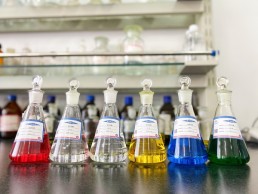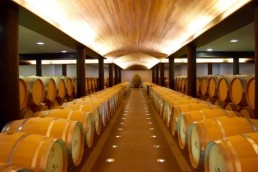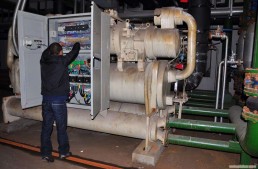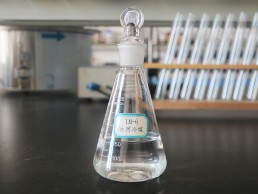Discussion on construction technology of hydrogen refueling station
There is no hydrogen production unit in the external hydrogen supply hydrogen refueling station. Hydrogen is transported from the hydrogen plant to the hydrogen refueling station through long tube trailers, liquid hydrogen tankers or hydrogen pipelines, compressed by the compressor and transported to the high-pressure hydrogen storage bottle for storage, and finally filled into fuel cell vehicles through the hydrogen dispenser.
According to different hydrogen storage modes, it can be further divided into high-pressure gas hydrogen station and liquid hydrogen station,About 30% of the world’s liquid hydrogen storage and transportation stations are hydrogen refueling stations, which are mainly distributed in the United States and Japan. At present, China is all high pressure gas hydrogen stations.Compared with the gas hydrogen storage and transportation, the liquid hydrogen storage and transportation hydrogenation station occupies a smaller area and has a larger storage capacity, but it is also more difficult to construct, which is suitable for large-scale hydrogenation.
Fig. 1 Technical Route of External Hydrogen Supply and Hydrogenation Station
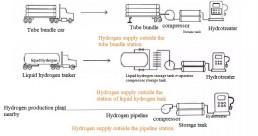
The internal hydrogen production and hydrogenation station is equipped with a hydrogen production system. The hydrogen production technologies include hydrogen production by electrolysis of water, hydrogen production by natural gas reforming, and hydrogen production by renewable energy. The hydrogen produced in the station generally needs to be purified, dried, and then compressed, stored, and injected.Among them, electrolytic water hydrogen production and natural gas reforming hydrogen production technologies are most widely used in the station hydrogen production and hydrogenation stations because of the ease of equipment installation and high degree of automation, and the natural gas reforming technology can be developed based on the construction of natural gas infrastructure. The European hydrogen production and hydrogenation stations mainly use these two hydrogen production methods.
Fig. 2 Technical route of internal hydrogen production and hydrogenation station

According to different hydrogen supply pressure levels, the hydrogen refueling station is divided into two types of hydrogen supply pressure: 35MPa and 70MPa.
Most foreign markets use 70 MPa,Restricted by the development of existing compressor and hydrogen storage bottle technologies, most domestic hydrogen refueling stations use 35 MPa.When 35 MPa pressure is used for hydrogen supply, the working pressure of the hydrogen compressor is 45 MPa, and the working pressure of the high-pressure hydrogen storage cylinder is 45 MPa;When 70 MPa pressure is used for hydrogen supply, the working pressure of the hydrogen compressor is 98 MPa, and the working pressure of the high-pressure hydrogen storage cylinder is 87.5 MPa.
On the basis of the original or new gas station and gas station, add hydrogenation functional facilities to make the station have multiple functions such as refueling, gas refueling, hydrogenation, etc.According to the Technical Code for Hydrogenation Station (GB 50516-2010), the hydrogen refueling station can be built in a single station, requiring relocation and high input cost;The oil hydrogen hybrid station is the development direction of the future hydrogen refueling station, which can also avoid the need for more space and time for electric vehicle charging.
Glacier coolant provides customers with coolant to ensure that the temperature is kept at – 40 ° C when hydrogen is injected, alleviate the temperature rise of pressure drop, and is widely used in hydrogen refueling stations.Through long-term research, our company has invented glacier coolant products and applied for national patents.He has successively invented “M3 super film rust prevention” technology, “Modify2000 composite modification” technology and “Box7 all-around test”.The problems such as corrosion of equipment, narrow temperature range and potential safety hazards caused by salt water, ethylene glycol and dichloromethane, which are substitutes of traditional coolant, have been solved.In addition to hydrogen refueling stations, they are also widely used as industrial low temperature load coolant, pharmaceutical high and low temperature load coolant, industrial antifreeze, central air-conditioning antifreeze, solar antifreeze, automobile antifreeze, laser antifreeze, etc.
Application of Glacier coolant Modified Polyfluorochemicals in the Industry
Immersion cooling of power devices
From high-speed electric trains to wind turbines, to electric motors in heavy bulldozers and personal electric vehicles (EVs),The ability to control voltage accurately on a large scale makes many efficient and powerful innovative ideas possible.However, the devices that manage this process, such as power inverters, thyristors, variable speed drives and other power devices, need to be efficiently cooled.
Glacier coolant modified polyfluorochemicals can be used as an ideal immersion cooling working fluid for variable voltage power devices.These insulating liquids can safely contact electronic equipment, and can achieve efficient and uniform cooling of power devices by using single-phase or two-phase immersion cooling.These liquids have a wide operating temperature range, excellent material compatibility and easy maintenance, making the immersion cooling method based on the Glacier coolant modified polyfluorochemicals an excellent alternative to the air, water or oil cooling method. The product achieves all of these properties without compromising on worker safety or environmental sustainability.

The progress of power devices has pushed the whole world forward.Our modified fluoride solution can keep these equipment cool by simple, efficient and high-performance immersion cooling.Compared with the existing cooling methods, the immersion cooling of glacier coolant modified fluoride solution has obvious advantages. It can be considered for future power device applications, such as high-speed railways, heavy machinery, wind turbines, high-speed elevators, and automobiles.
Data center cooling
The rise of data economy has fundamentally changed people’s lifestyle;Moreover, the current world is always online and highly integrated, which is driving enterprises to operate at a faster and faster speed.Almost all aspects of people’s daily life depend on the tasks running inside the data center.However, the operation of these data centers requires high costs in terms of energy consumption, water use, floor space, etc.Obviously, what we need is a faster, smarter and more sustainable data center. By transferring the data center from traditional cooling mode to submerged liquid cooling using glacier modified polyfluorochemicals, enterprises can manage the impact on costs and natural resources.
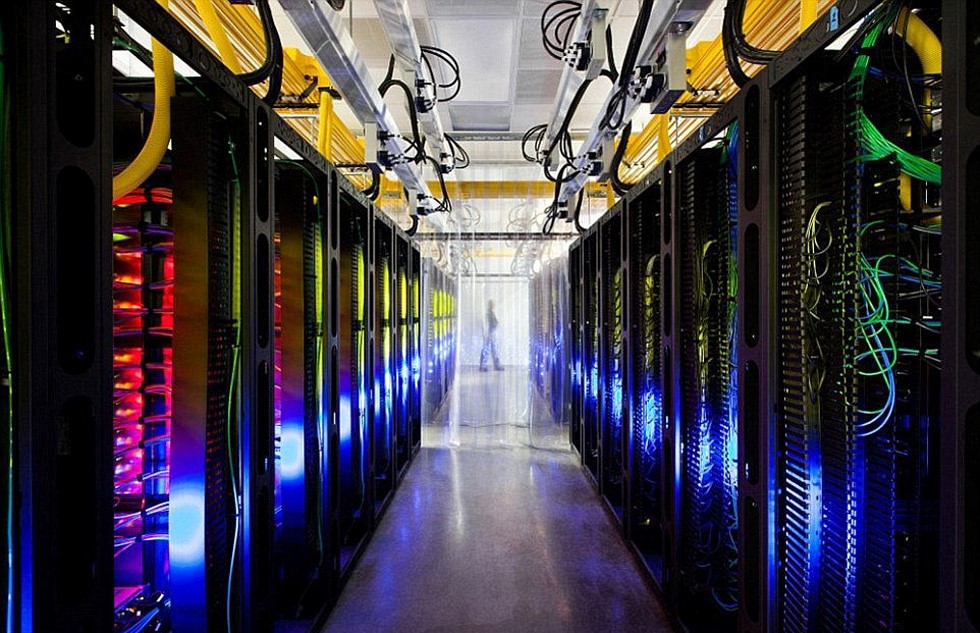
Glacier coolant modified polyfluorochemicals can be used in the following systems:
Large scale data center
No matter where you decide to locate, you can deploy a data center with a more consistent cooling infrastructure worldwide.Reducing or eliminating air cooling infrastructure (such as chillers, telecommunications/network equipment, facility floor space, etc.) to a greater extent can meet new workload demands while reducing capital expenditure.With the improvement of cooling efficiency, the cost of special power required for auxiliary cooling will be reduced.Reduce the power efficiency index (PUE) and the use of water resources. When the power efficiency index is as low as 1.03, a more energy efficient and sustainable data center can be built.
Supercomputing Center
By increasing power efficiency, immersion cooling can now support new or more compute intensive workloads that are difficult to cool in an efficient and cost-effective manner with traditional cooling solutions. Reduce operating expenses. With the improvement of cooling efficiency, the cost of special power required for auxiliary cooling will be reduced.
Enterprise High Performance Computing
Support new or more compute intensive workloads that are difficult to cool in an efficient and cost-effective manner with traditional cooling solutions. Lower latency. Delay sensitive workloads can be run in more intensive, space optimized data centers, or closer to users’ server cabinets to help reduce latency. Improve hardware reliability. The lower chip junction temperature, the reduction of temperature fluctuations and hot spots improve the operation reliability; At the same time, the necessary moving parts in traditional cooling methods are reduced to a large extent, thereby reducing common hardware failures.
Application of Glacier Coolant Modified Polyfluorochemicals in Insulating Gas, Thermal Control and Fire Extinguishing
Insulating gas for power industry
Make meaningful changes for the future of the earth.Replace sulfur hexafluoride with insulating gas, a powerful greenhouse gas, which is usually used for insulation and protection of medium voltage and high voltage transmission and distribution infrastructure.
The power grid is a way for us to rapidly improve the quality of life. Its reliability is crucial, and no error is allowed.Although the electric power industry brings safety and comfort to human beings and improves productivity, if sulfur hexafluoride leaks or accidentally releases, it will produce significant greenhouse gas effects, thus affecting the nvironment.
Therefore, scientists are concerned about the demand for insulating gas in the power industry. After a lot of development and testing, insulating gas came out.This insulating gas is often used in a gas mixture, its performance is equivalent to or improved, and its impact on the environment can be reduced. If you are looking to build a more environmentally friendly grid, we can help.
Considering the dielectric properties and reliability of sulfur hexafluoride, the power industry has been willing to use it as an insulating gas to meet relevant challenges.However, sulfur hexafluoride is a powerful greenhouse gas, and its global warming potential is 23500 times that of CO2 in a 100 year cycle.In fact, it is the most powerful greenhouse gas recognized by the Intergovernmental Panel on Climate Change (IPCC) so far.Therefore, glacier coolant cooperates with industry leaders to develop alternative solutions using fluoride insulation gas, which can reduce the impact of greenhouse gases by 99.99%.
Fire fighting
Use fire extinguishing systems to improve the year-round protection system, protect your key assets, maintain business continuity, help protect life and protect the earth.When you choose the fire extinguishing system based on glacier modified fluoride, you will choose the most advanced fire extinguishing science with excellent performance and high safety without harming the environment.Glacier modified fluoride extinguishing agent can work in the most challenging environments, such as data center, control room, museum, etc., to help protect your assets and personnel safety.In case of fire, this fire extinguishing cleaner can operate continuously, which helps to minimize the downtime for recovery and cleaning.In addition, it does not consume the ozone layer, the global warming trend (GWP) is less than 1, and the atmospheric life is short. It is not the goal of phasing out HFC, so it is an ideal long-term choice for the global environment and commercial development.The fire extinguishing agent is stored in liquid form and becomes gas when released. It will float to the affected area quickly and extinguish the fire quickly by absorbing heat. It will not harm workers or cause water damage.
Thermal control
Nowadays, many advanced technologies have to do the same thing: thermal management. Whether it is the temperature control in the semiconductor chip manufacturing process, or the heat dissipation in the data center, power devices, and avionics, heat transfer widely exists in modern life.
Glacier coolant improve people’s lives with the help of science.Fluorinated fluids can not only provide excellent performance in many heat transfer applications, but also have no negative impact on personal safety and environmental sustainability.Fluoride liquid is a nonflammable insulating liquid. It has the characteristics of wide working temperature range, easy maintenance and cleaning. It is a substitute for traditional cooling liquid (such as water, water glycol or oil).Fluoride liquid has a wide range of applications, from cold plate cooling of semiconductors to immersion cooling of data centers to spray cooling of avionics.
How Glacial Coolant Liquid Helps Data Center Implement Energy Conservation and Emission Reduction Plan
In the total global carbon emissions, the contribution of information and communication technology equipment will reach 14% by 2040, accounting for more than half of the carbon emissions of transportation. The energy consumption of data centers accounts for a large part of it.In the environment of energy conservation and emission reduction in the whole society, manufacturers and users pay more and more attention to the energy conservation and emission reduction of data centers.
Figure 1 Climate Warming and Ecological Catastrophe in 2100

Is it a bit shocking to see Figure 1?While mankind enjoys the convenient life brought by industrialization, it also brings a heavy burden and serious environmental pollution to the earth. The excessive emission of carbon dioxide has led to global warming.Due to the rising temperature, the area of Arctic glaciers is decreasing year by year. It is predicted that by 2100, there will be only a small area in the middle.At that time, the Arctic glaciers will almost disappear, and the precious polar bears will have nowhere to live.The sea level will rise by 2.2M, some islands and coastal cities will be submerged, and the land on which our human beings depend will become smaller.The nearby Beidaihe Beach and the Maldives, thousands of miles away, may only be preserved in photos.Climate change also has a significant impact on the global natural ecosystem. In addition to temperature rise, extreme weather events also occur frequently, which brings severe challenges to human survival and development.
Figure 2 Trends in world carbon dioxide emissions

Figure 2 shows the trend of carbon dioxide emissions.In the past 150 years, with the process of industrialization, global carbon dioxide emissions have increased dramatically.From 1950 to 2015, the global carbon dioxide emissions increased rapidly, which is also a stage of rapid development of China’s economic construction.By 2015, China’s GDP had exceeded 14% of the total world GDP,What percentage of carbon dioxide emissions does 14% of GDP correspond to?As shown in the figure,The proportion of carbon dioxide emissions in China has accounted for 24% of the world,The comparison between 14% and 24% data is obviously out of proportion. Although there are elements of economic structure, it also shows that China has a heavy task of energy conservation and emission reduction. We have a long way to go, which requires our joint efforts to protect the environment on which we and future generations depend.
In the face of global warming, the United Nations has also held climate change conferences many times to discuss strategies to curb warming.At the 11th United Nations Climate Conference and the 21st Conference of the Parties, China put forward its goal of independent contribution.The achievement of national goals cannot be separated from the contribution of each enterprise.When it comes to supporting the national energy conservation and emission reduction goals and reducing carbon emissions, we usually believe that high pollution and high energy consumption industries such as petroleum, chemical industry and steel smelting are the main “culprits” of carbon emissions.Recently, researchers from McMaster University in Canada released a new study that overturned the public’s perception.Researchers believe that,Information and communication technology products such as smart phones are also one of the drivers of global warming.In the total global carbon emissions,The “relative contribution” of ICT equipment will increase from 1% in 2007 to 3.5% in 2020, and will eventually reach 14% in 2040, accounting for more than half of transportation carbon emissions.The data center supporting information and communication technologies such as smart phones has become a major energy consumer.The construction and operation of the data center has generated a large number of greenhouse gas emissions, which has brought enormous challenges to resources and the environment.
Talking about energy saving and consumption reduction of data center,The Ministry of Industry and Information Technology, the State Administration of Organs Affairs and the National Energy Administration jointly issued the Guiding Opinions on Strengthening the Construction of Green Data Centers,It is proposed that by 2022, the PUE value of new large and super large data centers in China should be below 1.4, as shown in Figure 3.

To achieve this goal, you need to first understand the proportion of energy consumption in PUE in the data center.Figure 4 shows the typical energy consumption distribution of the traditional data center machine room with PUE value=2,From the figure, we can not only visually observe the statistical distribution of power consumption of various electrical equipment in the data center machine room.In addition, it can also clearly indicate where its maximum energy saving potential lies in order to minimize the total energy consumption of the data center.The power consumption of IT equipment accounts for 50%, and the energy consumption of air-conditioning compressor refrigeration system ranks second.To reduce the PUE value, it is necessary to reduce the power consumption of auxiliary equipment such as refrigeration as much as possible.
Figure 4 Typical energy consumption distribution diagram of traditional data center machine room with PUE=2
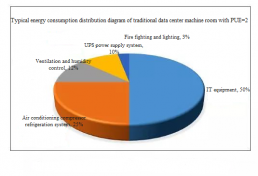
In view of the current development trend, Glacier Coolant Group has developed Glacier modified fluorinated liquid products, providing efficient and safe solutions for data centers, heating elements, electronic chips, etc. that need efficient heat dissipation.Glacier modified fluoride liquid is a highly stable perfluorinated liquid substance, which is colorless, tasteless, non-toxic, safe, insoluble in water, good thermal stability, and environmentally friendly.
Glacier modified fluoride liquid has a very moderate boiling point (about 50 ℃),High latent heat of vaporization(121.7 kJ/(kg·K),When immersed phase change liquid cooling is applied to data center server,Use the heat of evaporation tropics in the process of work,No air conditioning is required,The power consumption of the computer room is greatly reduced,Power Usage Effectiveness (PUE) is below 1.1,More than 85% energy saving compared with traditional air conditioning.Glacier modified fluoride liquid has excellent electrical insulation performance, with a dielectric strength of 55 kV, and will not cause damage to precision electronic instruments and equipment.At the same time, it has ideal chemical inertness, no ignition point, flash point, no combustion, no explosion, and good use safety.Glacier modified fluoride liquid also has excellent thermal conductivity, good fluidity and system compatibility. The ozone depletion potential (ODP) is 0, and the global warming potential (GWP) is 7. It is environmentally friendly, does not damage the ozone layer, and has wide applicability.
The typical schematic diagram of glacier modified fluoride liquid applied to the submerged liquid cooling system of the data center is shown in Figure 7.The server can be placed in a sealed cooling box with high density, and the main heat dissipation components of the server can be immersed in the glacier modified fluoride liquid. When the server is running, the heat dissipation parts generate a lot of heat to heat the modified fluoride coolant;As the boiling point of the coolant is low, it will immediately reach boiling, so that the coolant will be converted from liquid to gas, and the heat will be taken away by evaporation to achieve the effect of heat dissipation.The steam of the coolant condenses on the upper condenser into liquid and returns to the immersion liquid to realize recycling.
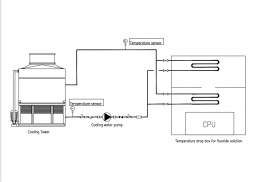
Glacier modified fluoride liquid directly contacts with various parts of the server, with fast heat transfer speed and energy saving of more than 85%;Simple equipment; It can realize high-density integration of servers, saving more than 80% of space; Both coolant and cooling water circulate in the system, so the loss of coolant and water is small and the operation cost is low.
Application of Modified Polyfluorocarbon with Glacier Coolant in Electronic Coating Agent
Nowadays, human life is increasingly inseparable from electronic equipment – communication, education, entertainment and industry.From consumer products such as smart phones and wearable devices to professional industrial fields such as automation control or artificial intelligence, electronic products are everywhere – many of them are used in challenging environments and need to protect internal components and exposed screens and surfaces.Designers and developers are always looking for a lightweight, reliable and suitable protective product for their manufacturing process.
Glacier coolant has been committed to the breakthrough technology of fluorinated liquid, which can be used to manufacture electronic coating agents to meet the needs and expectations of manufacturers and end users.
Protection equipment elements
The interior of each electronic device forms a complex and compact network composed of printed circuit board (PCB) circuits and micro components.These components are susceptible to corrosion, which will affect the reliability of the equipment and shorten its service life.The coating agent can not only effectively protect the equipment but also be cost-effective.
Screen and glass of protective equipment
Most users experience electronic devices through a touch screen. Adding an easy to clean coating on the surface of glass and glass sample can improve the appearance, tactility and functional use of the equipment.
♦easy to clean: easily wipe to keep the appearance of the equipment in the best state
♦anti pollution: prevent stains from adhering and remaining
♦easy to apply: dry in a few seconds, heat curing to enhance chemical resistance and wear resistance
♦no need to use expensive plasma vapor deposition (PVD) equipment
Application of Coolant in wine
In order to produce high-quality wine, it is very important to control the appropriate fermentation temperature in the process of grape juice cooling, clarification and fermentation.At the same time, there are colloidal substances, Tartrates and polyphenols in the wine that has just been fermented and filtered and clarified. When the environmental temperature changes greatly, haze or even precipitation will occur, which will affect the sensory quality and flavor of the wine.In addition, the fermentation process will release a large amount of heat, which will increase the temperature and affect the quality of the wine.Based on the above process requirements, it is more appropriate to select the coolant system.
The conventional coolant is mainly ethylene glycol, propylene glycol and other coolant with good cooling effect and temperature maintenance,However, the system has some corrosion problems after a long time,There is a risk of coolant leakage into the wine, so many wine manufacturers choose propylene glycol with lower toxicity. The price of propylene glycol is generally 3-4 times that of ethylene glycol, and the production cost is increased. Finally, the corrosion problem of the system has not been solved.
Glacier coolant has provided professional coolant in many wineries, which has solved the corrosion problem of equipment,Therefore, LM-4 type coolant can be used for the selection of the carrier coolant. The price is lower than that of propylene glycol, and the specific heat, thermal conductivity and viscosity are lower than those of propylene glycol, and the operating energy consumption is also low. It is a good choice.
Low temperature treatment is to reduce the temperature of newly produced wine to – 5 ℃, increase the stability and sensory quality of wine, and reduce the acid and astringent taste.The clarification temperature is generally 5 ℃, the red wine fermentation is 24 ~ 26 ℃, the white wine fermentation is 19 ℃, the low temperature treatment temperature is – 5 ℃, and it needs to be kept for 15 days at – 5 ℃.
The glacier coolant system can control the temperature accuracy of each link, reduce the operating cost of the system, and ensure the quality of wine.
Application of Low Carbon Building Coolant
Low carbon building refers to reducing the use of fossil energy, improving energy efficiency and reducing carbon dioxide emissions throughout the life cycle of building materials and equipment manufacturing, construction and building use.
At present, low-carbon buildings have gradually become the mainstream trend in the international construction industry.An often overlooked fact is that buildings account for almost 50% of the total carbon dioxide emissions, which is much higher than that in transportation and industry.The energy control of air conditioning in summer and heating in winter is the main part of carbon emission reduction in the life cycle.
The core of how a building can achieve zero carbon emission is energy storage, which is not only limited to the storage of electric energy, but also a storage of thermal energy and cold energy.
In summer, the solar energy and thermal energy are relatively abundant. The thermal energy is stored by the coolant and indirectly converted into domestic hot water. The cold source of the air conditioner is provided by the absorption refrigeration unit. The electric power of this system will be very small. It can realize self-sufficiency through solar power generation and storage for use, and realize zero carbon emission of the air conditioner in summer.
In winter, the load of the building is divided into the inner area and the outer area. The outer area needs heating and the inner area needs cooling. This kind of system has higher requirements on the coolant. In winter, the cooling in the inner area can directly exchange heat with the outdoor air through the coolant. In addition to using solar energy, the hot water in the heating area also needs to provide a backup heat source. The backup heat source uses a heat pump for heating, so as to realize the complementation of the cold energy in the inner and outer areas. In addition, the domestic hot water also needs to be produced by a heat pump.
Coolant is very important to the coupling of building cold and heat sources.On the premise of meeting the physical property requirements, the safety performance such as toxicity and flammability must also be paid attention to.Glacier coolant environmental friendly coolant is safe and stable, For the use of zero carbon energy venues.
Maintenance of Coolant system
In air-conditioning engineering, industrial production and scientific experiments, coolant devices are often used to indirectly cool the objects to be cooled, or the cooling capacity generated by the refrigeration device is transmitted over a long distance, which can solve some problems that are difficult to be solved by direct cooling refrigeration devices.
Due to the simple operation and maintenance of the system, some problems are often ignored.There is a cold storage water tank in the secondary pump circulation system. Generally, the water tank is open and connected with the atmosphere. In the long-term use process, because the water vapor partial pressure of the air is greater than the surface partial pressure of the coolant solution, the water in the air will enter the system.For some small systems, the impact of freezing point is more obvious, so small systems need to test and record their freezing point on one side every two to three months.Due to the large volume of the large system, the opening of the water tank is treated with a breather valve. Due to the relatively small amount of water migration, the measurement and recording time can be once a year. If problems are found, they can be handled as soon as possible to reduce the cost of adjusting and distributing the coolant in the later stage.The above is mainly for the maintenance of water-soluble coolant system.
For the non water permeable coolant system, the closed system is generally considered in the design process, and the coolant storage tank is also sealed by nitrogen to prevent moisture from entering.During the operation and maintenance of such systems, it is necessary to record and compare the pressure of the system. During the equipment maintenance process, air or some impurities will inevitably enter, which will accumulate at the filter in front of the water pump and coolant heat exchanger, and the moisture in the air will become ice. At this time, the pressure at the inlet of the pump will be low. If it is lower than the atmospheric pressure, air will invade the system and produce a vicious cycle, Therefore, this item needs to be included in the inspection process of the system.
Although the operation and maintenance of the coolant system is simple, it still needs fine management. Glacier coolant focuses on the coolant and application system, and provides professional operation and maintenance solutions.
Discussion on Ultra-low Temperature Coolant
There are many kinds of coolant, which are mainly classified according to physical components, but rarely classified according to temperature.Usually, temperature is only an important parameter in model selection. The minimum freezing point temperature of commonly used coolant is generally -40 ℃, and the lower temperature can be defined as ultra-low temperature.And this temperature range is quite broad -40~-145 ℃.-40~-60℃In application, it can be divided into several lower levels. The optional models in the temperature range of -40~-60 ℃ are mainly LM-8 and LM-11.
LM-8 has no flash point and is non-toxic, which is more suitable for immersion freezing or some low-temperature material treatment, while LM-11 has a relatively high flash point, which is suitable for some thermostatic water tanks or industrial applications. This temperature range is applicable to more.-60~-100 ℃, which is a relatively low temperature range, is suitable for scientific research and laboratories.
LM-1/LM-6/LM-14 have different models to choose from. LM-1 and LM-6 have flash points. When using, the system needs explosion-proof design. In addition, the coolant itself is toxic, and personnel should avoid contact during operation.
LM-14 is non-toxic and has no flash point, but the price is relatively expensive. It is a good choice for small experimental systems.In the temperature range of -100~-145 ℃, it is less applicable.
Generally, liquid nitrogen or liquefied gas gasification is used in industries to achieve low-temperature control, but some industries need stable temperature control and continuous operation. Coolant is an ideal choice, and the selection range of coolant in this temperature range is relatively small. LM-6 series models can be as low as -145 ℃.Ultra low temperature coolant is still a relatively wide range, and it is necessary to make an overall selection of the physical properties, toxicity and flash point of the coolant according to the applicable place. In some special processes, an overlay system between the coolant is also required, which makes the coolant into multiple cycles and then superimposes.
At present, there is little research on the application of ultra-low temperature coolant. Glacier Coolant will independently build an Engineering Application Laboratory of ultra-low temperature coolant.
Application of coolant in air source heat pump
The function of air source heat pump is: an energy-saving device that can make heat flow from low-level heat source air to high-level heat source.It is a form of heat pump.As the name suggests, heat pumps, like pumps, can convert low-level heat energy that cannot be directly used (such as heat contained in air, soil and water) into high-level heat energy that can be used, so as to achieve the purpose of saving some high-level energy (such as coal, gas, oil, electricity, etc.).As the demand for cold sources is becoming more and more diversified, the functions of refrigeration and heating are often integrated in a set of equipment.It is common in cold winter and hot summer areas, but in some buildings without heating conditions in the north, air source heat pump products for coolant appear.
In winter, when the outdoor weather may be lower than -20 ℃, in order to maintain the stability of the system, a heat storage box is required. When the outdoor temperature is high, heat storage is carried out in advance. At night or when office work is required, the heat pump is supplemented to release heat energy due to the reduced heating efficiency.Fan coil units are generally used at the end, which are heated in winter and cooled in summer.The coolant in the system needs a high-low temperature switch. The high temperature can reach 60 ℃, and the local minimum temperature in winter may reach -35 ℃ when the low temperature is not used. In addition, there are many materials in the system, such as copper, iron, aluminum, PPR and so on. Therefore, the low-temperature heat pump system has high requirements for the coolant.Conventional automobile antifreeze is prone to corrosion in the process of use, and the system efficiency is seriously reduced.The coolant developed by the glacial coolant pharmaceutical chemical industry has stable performance, and the operating condition is -35~120 ℃, which is practical for low-temperature air source heat pump.
In the operation of heat pump system, the secondary pump system is generally used.It is appropriate to use the water tank of the coolant pump as a closed water tank.If it is an open water tank, under the operating condition of the heat pump in winter, the coolant evaporates quickly, and it is easy to cause the drift of the physical parameters of the coolant when the coolant is supplemented in the later stage. In summer, the low-temperature operation is easy to cause moisture absorption and the freezing point moves up. Therefore, the low-temperature coolant heat pump system needs to regularly detect the physical properties of the coolant and take protective measures. glacial coolant is provided with lifetime free testing.


